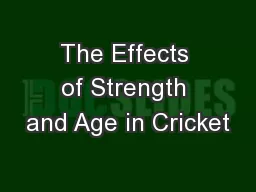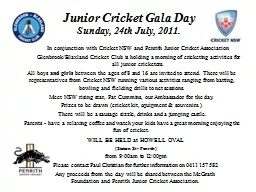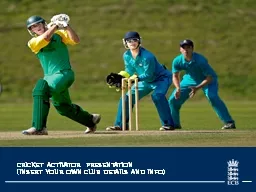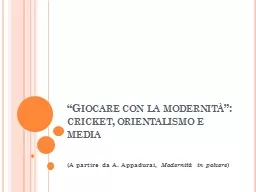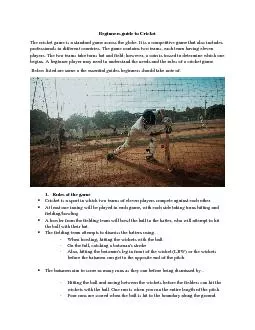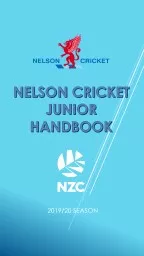PPT-The Effects of Strength and Age in Cricket
Author : trish-goza | Published Date : 2018-11-10
Sara Khan 8A Question Will a Cricket players strength and age affect the way they play Cricket Background Research A fast baller can send the ball at a fantastic
Presentation Embed Code
Download Presentation
Download Presentation The PPT/PDF document "The Effects of Strength and Age in Crick..." is the property of its rightful owner. Permission is granted to download and print the materials on this website for personal, non-commercial use only, and to display it on your personal computer provided you do not modify the materials and that you retain all copyright notices contained in the materials. By downloading content from our website, you accept the terms of this agreement.
The Effects of Strength and Age in Cricket: Transcript
Download Rules Of Document
"The Effects of Strength and Age in Cricket"The content belongs to its owner. You may download and print it for personal use, without modification, and keep all copyright notices. By downloading, you agree to these terms.
Related Documents

